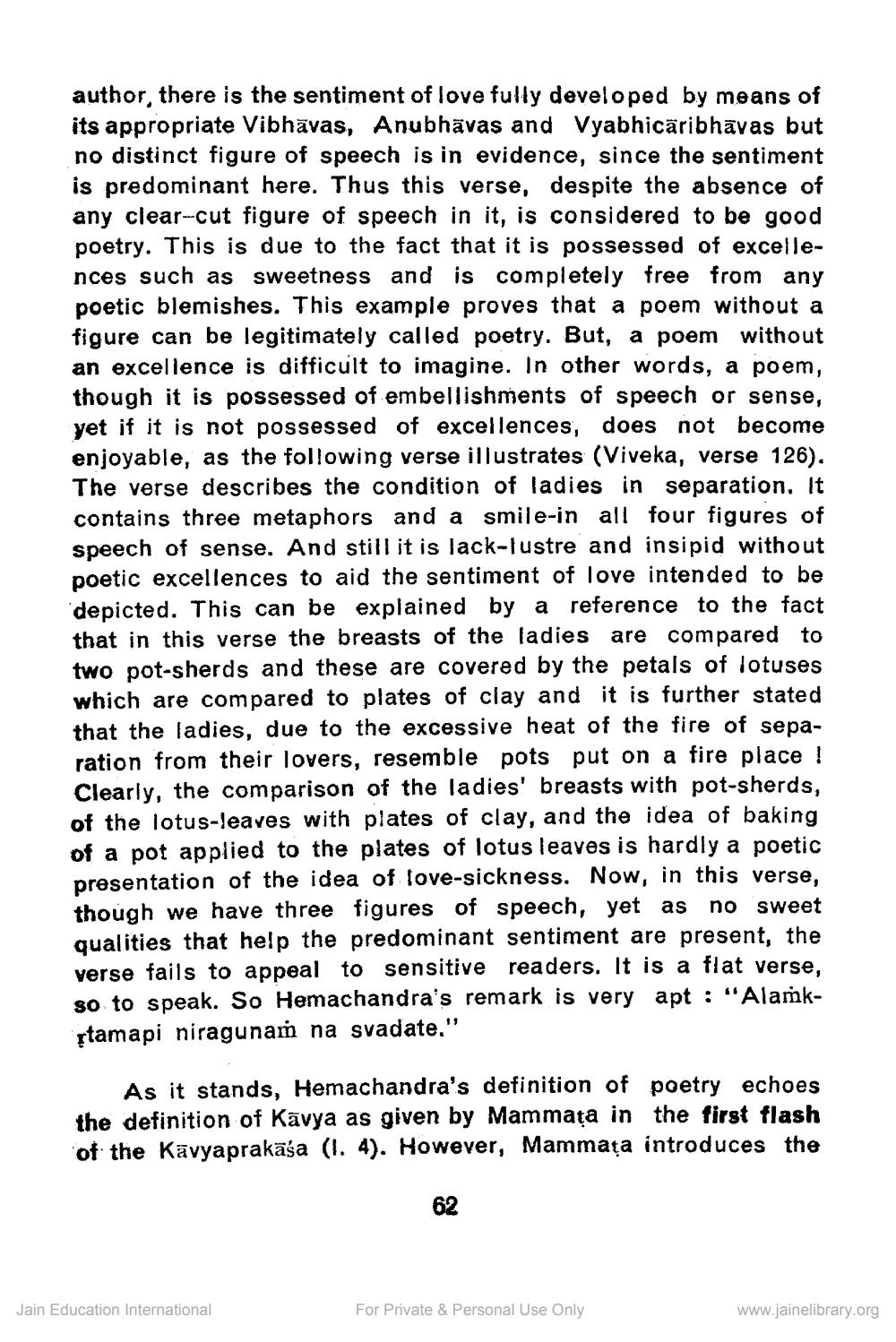________________
author, there is the sentiment of love fully developed by means of its appropriate Vibhāvas, Anubhāvas and Vyabhicäribhāvas but no distinct figure of speech is in evidence, since the sentiment is predominant here. Thus this verse, despite the absence of any clear-cut figure of speech in it, is considered to be good poetry. This is due to the fact that it is possessed of excellences such as sweetness and is completely free from any poetic blemishes. This example proves that a poem without a figure can be legitimately called poetry. But, a poem without an excellence is difficult to imagine. In other words, a poem, though it is possessed of embellishments of speech or sense, yet if it is not possessed of excellences, does not become enjoyable, as the following verse illustrates (Viveka, verse 126). The verse describes the condition of ladies in separation. It contains three metaphors and a smile-in all four figures of speech of sense. And still it is lack-lustre and insipid without poetic excellences to aid the sentiment of love intended to be depicted. This can be explained by a reference to the fact that in this verse the breasts of the ladies are compared to two pot-sherds and these are covered by the petals of lotuses which are compared to plates of clay and it is further stated that the ladies, due to the excessive heat of the fire of separation from their lovers, resemble pots put on a fire place ! Clearly, the comparison of the ladies' breasts with pot-sherds, of the lotus-leaves with plates of clay, and the idea of baking of a pot applied to the plates of lotus leaves is hardly a poetic presentation of the idea of love-sickness. Now, in this verse, though we have three figures of speech, yet as no sweet qualities that help the predominant sentiment are present, the verse fails to appeal to sensitive readers. It is a flat verse, so to speak. So Hemachandra's remark is very apt : "Alamkįtamapi niragunam na svadate."
As it stands, Hemachandra's definition of poetry echoes the definition of Kavya as given by Mammata in the first flash of the Kävyaprakasa (1. 4). However, Mammața introduces the
62
Jain Education International
For Private & Personal Use Only
www.jainelibrary.org




